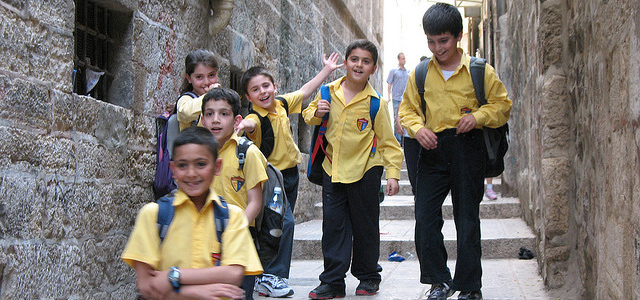RFID Tags Designed to Reduce Truancy and Improve Safety in Schools
 RFID chips maintain inventory levels in retail stores, help return lost pets to their owners, and even keep government agencies organized. But when it comes to using them to keep tabs on people, the applications have been quite limited.
RFID chips maintain inventory levels in retail stores, help return lost pets to their owners, and even keep government agencies organized. But when it comes to using them to keep tabs on people, the applications have been quite limited.
And while using RFID tags to keep track of students in the United States has met with a considerable amount of resistance, schools in other countries are using these versatile trackers to reduce truancy, improve safety, and streamline daily attendance practices. Here's a little more about how these tiny chips are being used in Brazil, Japan, and Buffalo, New York.
RFID tags help keep kids in school in Brazil
In the Brazilian city of Vitoria da Conquista, school officials saw truancy levels rising for elementary-age children.
"We noticed that many parents would bring their children to school but would not see if they actually entered the building because they always left in a hurry to get to work on time," Vitoria da Conquista secretary Coriolano Moraes said. "They would always be surprised when told of the number of times their children skipped class."
This problem led administrators to look for ways of quickly identifying students as they walked through the doors each morning. And like many other industries, they turned to RFID tags and readers.
Each child will receive t-shirts embedded with locator microchips as part of their school uniform. And RFID readers installed in each school will confirm attendance each day. The system is set up to send a daily text message to every parent, confirming the arrival of their child. And for those students who don't appear, a text message also goes out twenty minutes after the first bell rings, letting parents know of their child's truancy.
Initially targeting 20,000 children at 213 schools in the city, the program expects to double by 2013, when 100% of students aged 4 to 14 will receive the RFID tagged uniforms. Costs to design, test, and produce the shirts are estimated at $670,000 US.
RFID tags on backpacks reassure Japanese parents
Thousands of miles away in Tokyo, Japan, safety concerns have prompted a trial of RFID chips at a private, suburban elementary school. With the goals of both keeping the school grounds safe and ensuring higher student attendance, Rikkyo Elementary consulted with electronic giant Fujitsu in attaching RFID chips to student's backpacks.
RFID readers located at the school gates monitor each student as they come and go each day. The tags are easily read at distances up to 10 meters, so the RFID tags don't give the impression of security checkpoints at the school. And like the system in Brazil, parents receive automatic notification on their mobile telephones of their children's safe arrival at school.
Conscious of privacy concerns, school administrators set up the RFID tracking system using number codes rather than student names, making sure that no individual identifying information can be taken from the RFID tags. The system is also designed to keep unwanted visitors off of school grounds, sounding an alarm when those without RFID chips pass by the readers.
Student identification cards embedded with RFID tags in NY
And in the eastern United States, the director of a K-8 charter school in Buffalo, New York hopes that RFID tracking will help his staff do their work more efficiently so that his students will spend more time learning.
Believed to be one of the first schools in the US to implement RFID tags for attendance purposes, the Enterprise Charter School began using the tracking system to record the time each student arrives at school in the morning.
Each pupil wears a plastic ID card around their neck, complete with photograph and embedded RFID tag. Students pass by a kiosk at the school entrance, and tap their photograph as it appears, recording their time of entry in a computerized database.
This process helps to allay fears of lack of privacy as the readers in the kiosks have a range of just 20 inches, requiring students to select their own picture on the screen, the same way you might swipe a mag stripe card.
The director hopes to expand the RFID tracking program in future months to include library loans, disciplinary records, visits to the nurse's office, and cafeteria purchases. He'd also like to improve the safety of students on school buses by using the RFID tags to track when they get on and off before and after school.
While mass adoption of RFID tags for tracking humans may not be right around the corner, many people across the globe are studying and testing strategies to use these efficient and cost effective devices.
See related articles:
How Chip Based Serialization Benefits Item Level RFID
RFID Tracking Helps Pinpoint Final Resting Places With Ease
RFID Tags and RFID Readers For Improved Hotel Inventory Control
{jcomments on}
